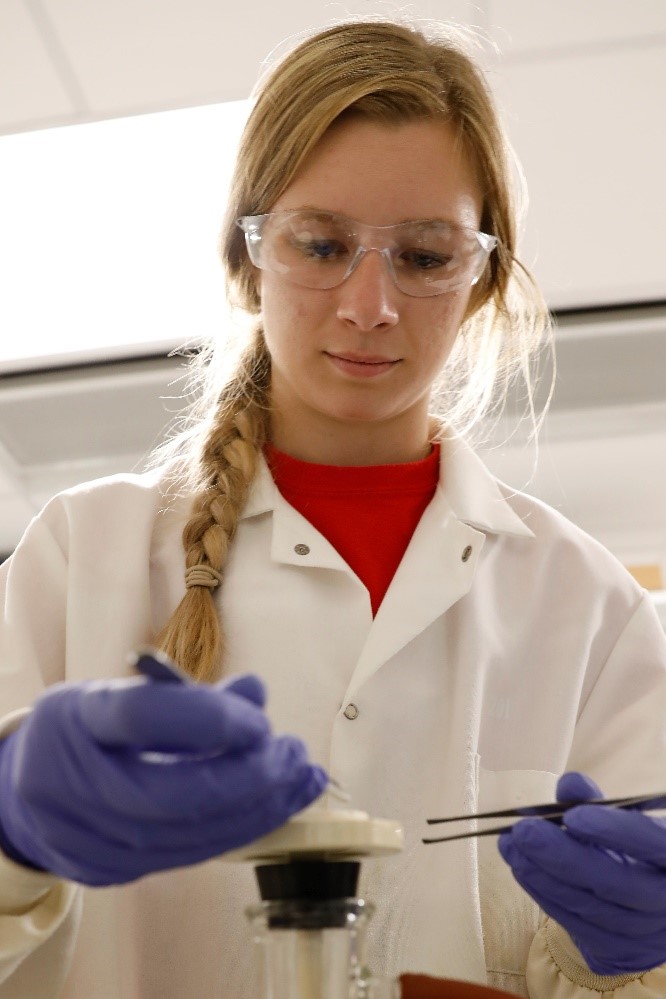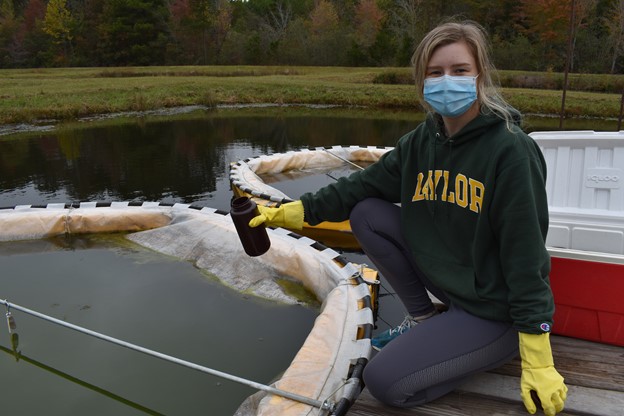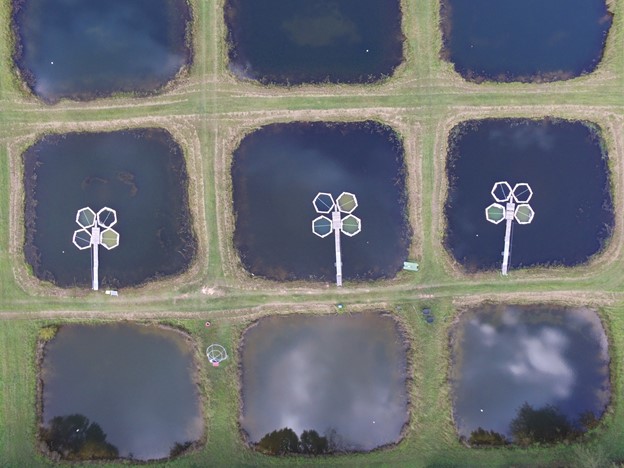This month’s Headwaters Highlight is the brilliant Isabelle Andersen (she/her/hers). She’s currently a first year PhD student working with Dr. Thad Scott at Baylor University.

Isabelle shared with us about how she became drawn to freshwater ecology research and about the work she’s doing now on algal blooms:
I became quite familiar with the outdoors at an early age with some of my fondest memories growing up being my family’s camping trips. While I love all aspects of the natural world, my interest for aquatic ecology didn’t come to the forefront until high school. As part of my AP environmental science course, I got involved with the Caring for our Watersheds program (an education program that engages students in preserving and improving their local watersheds through student-led solutions). I submitted a proposal to the Caring for our Watersheds program that addressed how to reduce thermal pollution and prevent soil erosion into Mill Creek, a highly degraded tributary of the Ohio River. I was chosen as a finalist and, with the help of volunteers from the Wyoming Environmental Stewardship Commission and funding from Agrium (now known as Nutrien), planted over 600 tree saplings along the riparian zone of Mill Creek. This experience was so rewarding, I knew that learning more about our freshwater environments and how to preserve them was something I wanted to do for the rest of my life.

Freshwater cyanobacterial blooms are becoming a predominant water-quality threat to human health because the frequency and magnitude of blooms are increasing yet predicting the occurrence of toxic blooms remains elusive.
Forecasting toxic blooms requires an understanding of which phytoplankton species will dominate the assemblage of freshwater ecosystems given the complex interrelationships between nutrient supply and grazing pressures. Although large-scale ecosystem studies have indicated that nutrient-rich lakes with relatively low N:P ratios are at greater risk for toxic cyanobacteria blooms, small-scale laboratory experiments have suggested that the opposite condition of high N:P is needed for maximal toxin production. This apparent disconnect is magnified by the virtual absence of medium-scale field experiments testing the effects of N and P stoichiometry on toxic cyanobacterial blooms. Therefore, medium-scale in-lake mesocosm experiments are needed to understand how phytoplankton assemblages, and toxic cyanobacteria populations in particular, will respond to varying N:P ratios in lakes. What I’m trying to find out is what effect nutrient stoichiometry has on phytoplankton biomass and assemblage structure, fixation rates, and cyanotoxin production in mesocosms.

My field site is located at the Ole Miss Biological Field Station (Oxford, Mississippi, USA) where I use 3 of their experimental ponds. Each experimental pond has 4 limnocorrals which extend from the surface down to the bottom of the pond to allow for sediment flux. We dose the limnocorrals at 4 different N:P ratios by adding the same amount of P and increasing amounts of N. The N:P ratio treatments are 2.2, 16, 55, and 110 (molar).

Once a week, I filter the water samples onto 25 mm filters to collect particulate carbon, nitrogen, phosphorus, d15N (to measure N fixation, Baker et al. 2018), and toxins (specifically microcystins). I ash CN filters and rinse particulate P filters with a few drops of 10% HCl and DI water prior to filtering. Additionally, I filter chlorophyll-a (Chl-a) onto 47mm filters. I also save the filtered water to measure for dissolved toxins, dissolved delta 15N, and dissolved nitrogen and phosphorus. I also collect unfiltered water for total nitrogen and phosphorous measurements and for phytoplankton counts under a microscope (preserved with lugols). I use a type of fluorometer called the PhytoPAM to determine the chlorophyll concentration (ug/L) and irradiance curves for 4 algal groups: cyanobacteria (blue green algae), chlorophytes (green algae), diatoms, and cryptophytes. Additionally, I have sensors in the limnocorrals measuring dissolved oxygen, temperature, and light intensity 24/7.
While I just finished my field season and am just starting to look into my data, through my study, I seek to help better predict the occurrence of toxic cyanobacterial blooms. I hope my research provides insight on how to manage our freshwater ecosystems and their watersheds to preserve our water quality.
Isabelle can be found @is_Andersen on Instagram and @anderbaena on Twitter. She can also be reached at isabelle_andersen1@baylor.edu. Make sure to check out how she takes over the SRC Instagram this week!

